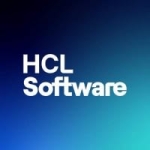- Event-based scheduling
- Support for other applications via connector, such as Oracle, SAP and data warehousing software
If you want to run any Oracle, SAP or data warehousing job, you don't need to install a TWS client on the target server. You just have to install a connector on one of your TWS systems and provide the required parameters such as system credentials in an encrypted format.
It supports almost all of the different groups in the organisation for automating their tasks, such as finance and accounting, transport department, procurement department and several others as well.
Whenever we find any bug/vulnerability, we immediately inform IBM and they provide us a fix, so I can say it is being continuously improved.
A few things are missing but I can manage without them, such as a cross-reference report. For example, if you want to find particular job script, it is very difficult to do so from the TWS command line or from the TDWC (Tivoli Dynamic Workload Scheduler) tool. On the other hand, there is a Germany-based company Horizont, which has a very nice tool, TWS/WebAdmin, which provides such a facility.
The second thing is that there is no built-in facility to run SFTP/FTP file transfer jobs. You have to create your own SFTP/FTP scripts to run these types of jobs.
An internal change management tool is also not available in IBM TWS, but other scheduling software do offer one.
These are a few flaws in TWS, but operation-wise and handling-wise, it is a superb tool as compared to other batch job scheduling tools.
One thing is true: You will not get all of the facilities in one tool, so I recommend you go with TWS for smooth automation delivery.
I have used this solution for the last seven years.
We never encountered any stability issues. If your TWS administrator is very good with TWS, then he/she should always keep your TWS landscape stable.
We never encountered any issues with scalability.
We used BMC Control-M first, but later we changed to TWS due to its efficiency, accuracy and scalability.
If you have strong knowledge in TWS, then initial setup is just like bread and butter for you.
I heard it is very expensive compared to other job scheduling tools.
Go ahead and use the TWS solution. It is really a very good product.














Sushil, thanks for your great review. Since then, FTP/SFTP job has been implemented, and an internal change mgmt tool has been published in Dec 2016, release 9.4. Try it out and let us know!